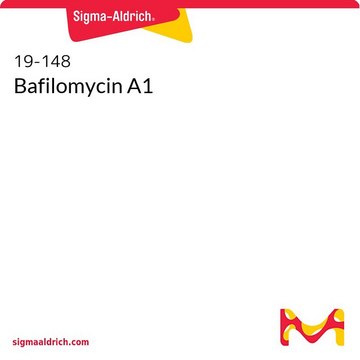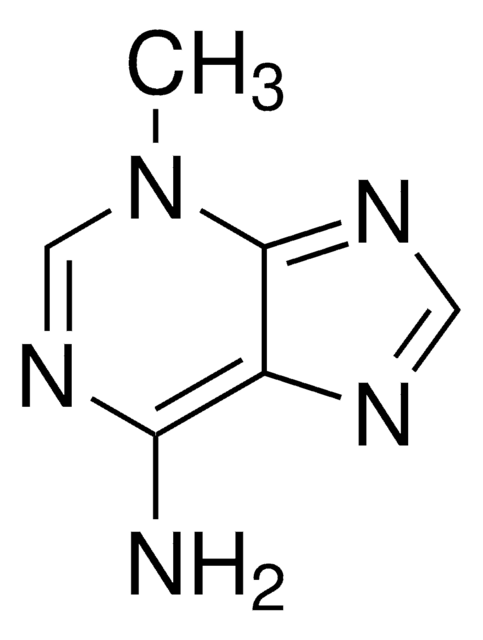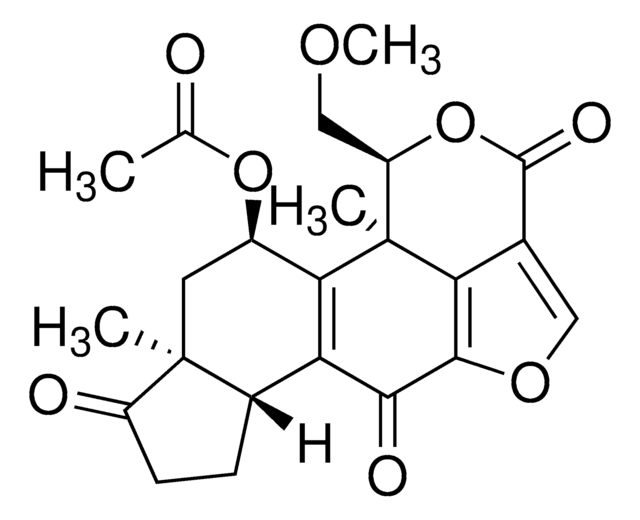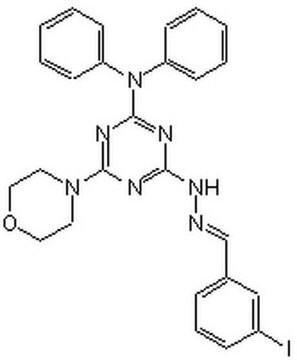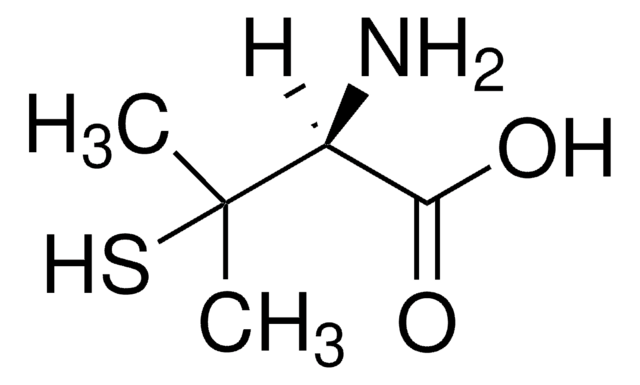Kluczowe dokumenty
SML1661
Bafilomycin A1
from Streptomyces griseus, ≥90% (HPLC), DMSO solution, V-ATPase inhibitor
Synonim(y):
BafA1
About This Item
Polecane produkty
Nazwa produktu
Bafilomycin A1 Ready Made Solution, 0.16 mM in DMSO, from Streptomyces griseus
pochodzenie biologiczne
Streptomyces griseus
Poziom jakości
Formularz
DMSO solution
stężenie
0.16 mM in DMSO
Warunki transportu
dry ice
temp. przechowywania
−20°C
ciąg SMILES
O1[C@@H]([C@H]([C@@H](C[C@]1(O)[C@H]([C@H](O)[C@@H]([C@H]2OC(=O)\C(=C\C(=C\[C@H]([C@H]([C@H](C\C(=C\C=C\[C@@H]2OC)\C)C)O)C)\C)\OC)C)C)O)C)C(C)C
InChI
1S/C35H58O9/c1-19(2)32-24(7)27(36)18-35(40,44-32)26(9)31(38)25(8)33-28(41-10)14-12-13-20(3)15-22(5)30(37)23(6)16-21(4)17-29(42-11)34(39)43-33/h12-14,16-17,19,22-28,30-33,36-38,40H,15,18H2,1-11H3/b14-12+,20-13+,21-16+,29-17-/t22-,23+,24-,25-,26-,27+,28-,30-,31+,32+,33+,35+/m0/s1
Klucz InChI
XDHNQDDQEHDUTM-JQWOJBOSSA-N
Opis ogólny
Zastosowanie
- as an endosome acidification inhibitor to study the importance of endosome acidification in the extracellular vesicle uptake and cytosolic release of stably expressing NanoLuc luciferase-tagged Hsp70 (NLuc-Hsp70) in HeLa cells
- as a vacuolar-type H+-ATPase (V-ATPase) inhibitor to study its effects on autophagic turnover of light chain 3 β (LC3-II) in mice
- as an autophagy inhibitor to study its effects on primary rat liver sinusoidal endothelial cells (LSECs) defenestration
Działania biochem./fizjol.
Inne uwagi
Kod klasy składowania
10 - Combustible liquids
Klasa zagrożenia wodnego (WGK)
WGK 1
Temperatura zapłonu (°F)
188.6 °F - closed cup
Temperatura zapłonu (°C)
87 °C - closed cup
Wybierz jedną z najnowszych wersji:
Masz już ten produkt?
Dokumenty związane z niedawno zakupionymi produktami zostały zamieszczone w Bibliotece dokumentów.
Klienci oglądali również te produkty
Nasz zespół naukowców ma doświadczenie we wszystkich obszarach badań, w tym w naukach przyrodniczych, materiałoznawstwie, syntezie chemicznej, chromatografii, analityce i wielu innych dziedzinach.
Skontaktuj się z zespołem ds. pomocy technicznej

